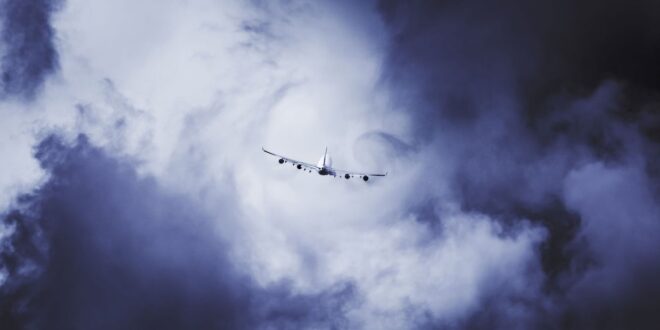If you travel by plane but tend to be anxious about the possibility of turbulence during a flight, this tool is for you. A free, interactive map reveals areas along the route of your journey where your aircraft could potentially experience turbulence.
“Please return to your seat and fasten your seatbelt”… Anyone who’s flown more than a couple of times is surely familiar with this type of announcement.
“It appears that we’re about to enter a zone where we may encounter some turbulence,” is usually how the flight attendant’s announcement continues. And while it’s a common occurrence, when traveling through the skies, nobody enjoys it, while some passengers even become quite stressed out by these episodes.
While travelling by airplane continues to get safer over time, fear of flying, or aerophobia remains a reality, even in a context where air travel has become very commonplace due to the arrival of low-cost airlines in the 1990s.
Even passengers who don’t have this type of paralysing anxiety and who have no fear about boarding an aircraft, can suffer distress upon hearing that their plane is about to go through pockets of turbulence.
This interactive map is set to be a go-to tool for many passengers. Spotted by the British publication the Daily Mail, this platform, which can be consulted free of charge, outlines potential areas of turbulence. Simply enter the airport of departure and destination, and Turbli.com will identify the next flight within the next 24 or 36 hours.
It’s not just a question of knowing whether the aircraft is due for a bumpy journey, but also of knowing more precisely which zones – or rather, which flight times – are potentially subject to shocks.
The map shows the entire route, and uses a colour code ranging from light blue to red to indicate where turbulence is likely to occur.
As you might have guessed, red refers to areas of severe turbulence. And it should be highly reliable, since the interactive map is based on data used by the airline pilots themselves. In fact, the data is extracted from meteorological models developed by the National Oceanic and Atmospheric Administration (NOAA). The map is updated every six hours.
Another way to put your mind at rest (or not) is to consult Turbli.com’s ranking of the air routes most frequently subject to turbulence. Six of the ten bumpiest journeys worldwide, based on the analysis of 150,000 air routes flown in 2023, are in Asia. Europe’s most turbulence-prone routes are between Milan and Switzerland – Geneva and Zurich.
Making this map available to the public is interesting in view of last year’s news of an increase in the frequency of severe turbulence over the last 40 years. In a study published in the journal Geographical Research Letters, a researcher from Reading University in the UK calculated that this type of turbulence had increased by 55% between 1979 and 2020 on the North Atlantic, one of the world’s busiest transport routes.
The scientist pointed out the role of global warming in the frequency of such events as it’s the increase in greenhouse gases that disrupts flights, with warmer air causing more windshear in the jet streams.
However, turbulence could one day be a distant memory, even given the current context of climate change. Last autumn, an Austrian company announced that it had developed a technology capable of identifying future areas of turbulence.
Turbulence Solutions has developed a program that integrates data from a probe placed on the aircraft’s wings to anticipate turbulence and then “making use of counteracting control surface deflections”.
Not only could this technology reassure passengers with a smoother flight, but it could also reduce delays or even journey times (due to pilots decreasing speed in turbulent zones) as well as damage caused to aircraft by storms. – AFP Relaxnews
 BeritaKini.biz Berita Viral Terkini di Malaysia
BeritaKini.biz Berita Viral Terkini di Malaysia





